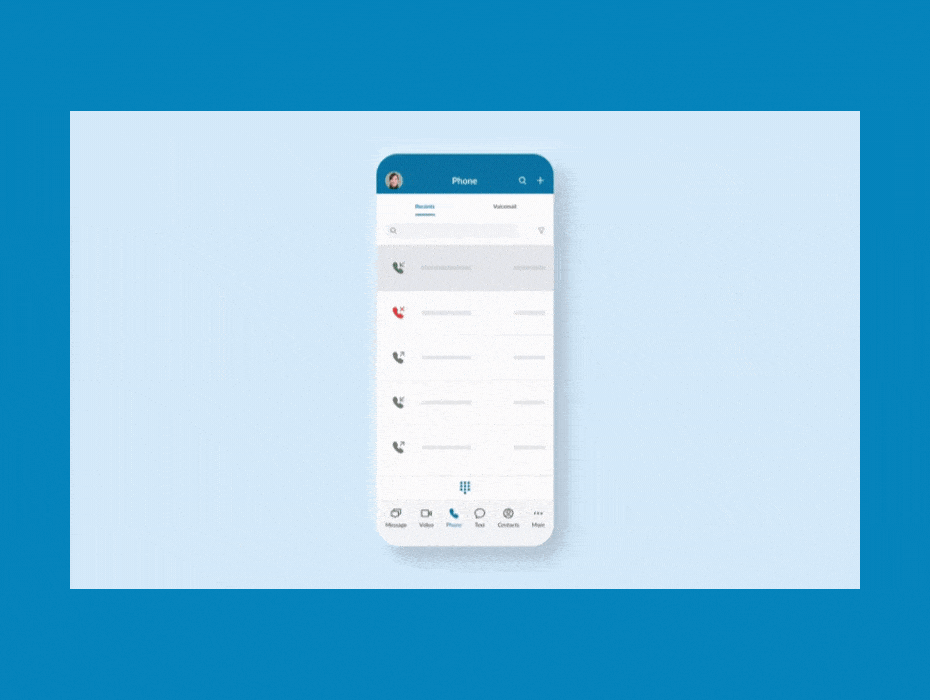Whether you’re the talk-it-out type or you prefer to send your calls straight to voicemail, there’s no denying the massive role the phone plays in our personal and work lives.
And there’s no better time to recognize the connecting power of the phone than on National Telephone Day, the anniversary of the date Alexander Graham Bell introduced his “electric speaking machine.”
Phones have truly changed how we communicate, and even as newer modes of communication become popular, there’s still nothing like an OG phone call.
In honor of National Telephone Day, celebrated every year on April 25th, here are 10 mind-blowing facts about phones that you’ve probably never heard before.
1. The first phone greeting was actually “Ahoy”
“Ahoy-hoy, who’s calling please?” Sounds strange, right?
While we’re used to answering the phone with the word “hello,” that de facto greeting was not how Bell envisioned that people would answer calls. He preferred the phrase “ahoy-hoy,” a commonly used nautical greeting.
Although Thomas Edison’s suggested opener “hello,” soon prevailed as the norm, legend has it that Bell answered his calls with “ahoy-hoy” until the day he died.
2. Telephones weren’t invented by Alexander Graham Bell
Alexander Graham Bell may be the name that comes to mind when you think of the inventor of the telephone. But the credit rightly belongs to Antonio Meucci, a Florentine immigrant whose “teletrofono”—first demonstrated in New York in 1860—preceded Bell’s invention by nearly 17 years.
In 2002, the U.S. Congress voted to recognize Meucci as the actual inventor of the telephone, a decision that was celebrated in Italy.

This feature pulls up a caller’s LinkedIn profile the moment your phone rings
3. The smartphone was invented by IBM
Apple and Android may be the predominant names in smartphones today, but the original name on the smartphone scene was “Simon.”
Released by IBM in 1994—13 years before the first iPhone—Simon featured a touch screen and email capabilities, and offered a handful of basic apps such as a calculator and sketch pad.
4. The first SMS text message ever said “Merry Christmas”
While holiday greetings may be the least unique type of greeting you might send these days, “Merry Christmas” is actually the most original text—literally.
When engineer Neil Papworth sent the world’s first SMS message from his computer to a colleague back in 1992, it simply said “Merry Christmas.”
That life-changing message marks its 30-year anniversary this year, and—in line with our current times—was recently sold as an NFT.
5. 100,000 payphones still exist in the U.S
While they may seem more like a plot device in a Superman or rom-com movie than something people actually use now, payphones still exist—you just have to look a little harder than you once did to find a working one.
At their peak in the 1990s, there were roughly 2.6 million public payphones in the U.S. Only about 100,000 payphones remain today—one-fifth of which are found in New York.
6. Most Americans don’t answer calls from unknown numbers
If the growing volume of spam calls have you avoiding picking up your phone altogether, you’re not alone. 80% of Americans say they don’t answer calls from unknown numbers.
Of those who say they do pick up, men and younger adults, aged 18 to 29, are most likely to answer calls of unknown origins.
7. 3.8-trillion hours spent on phones in 2021 worldwide
If it feels like you spend more time on your phone than ever, that’s because it’s true. In 2021, global smartphone users collectively spent a record 3.8-trillion hours on their smartphones. That’s nearly five hours a day for the average smartphone user.
8. There is no true “first” smartphone app
While basic apps—such as those for the IBM Simon smartphone or the Snake game for Nokia phones—have existed for several decades, there’s no one pioneer of the modern smartphone app era.
That’s because when the Apple app store launched in 2008, giving rise to the modern app ecosystem, there were roughly 500 apps available—and all of those can essentially share the bragging rights.
9. 85% of U.S. adults own a smartphone
We’ve come a long way since the days when smartphone users were a niche segment. Today, 85% of American adults own a smartphone—up from 35% in 2011.
Smartphone proliferation is highest among younger users—more than 95% of Americans aged 18 to 49 have a smartphone.
10. 69% of people believe phone calls lead to better personal relationships at work
In this era of hybrid and remote work, phone calls do more than merely allow you to ask a question or exchange information—a phone is a key tool for fostering connection and camaraderie between colleagues.
A whopping 69% of workers say the phone helps them have better relationships with coworkers, and 76% believe that colleagues who use voice communication are more connected to each other, according to research conducted by RingCentral.
Originally published Apr 25, 2022
Looking For Startup Consultants ?
Call Pursho @ 0731-6725516
Telegram Group One Must Follow :
For Startups: https://t.me/daily_business_reads







